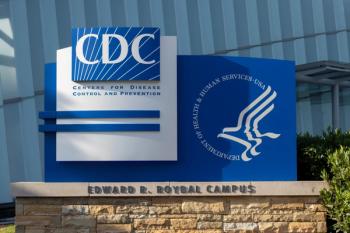
FDA to Investigate Bleeding Risk of Dabigatran
As FDA undertakes a new safety review of Pradaxa, pharmacists should educate patients who take the drug to recognize signs of serious bleeding.
As the FDA undertakes a new safety review of Pradaxa, pharmacists should educate patients who take the drug to recognize signs of serious bleeding.
After receiving reports of serious bleeding events associated with Boehringer Ingelheim’s anticoagulant Pradaxa (dabigatran etexilate mesylate), the FDA announced December 7 that it plans to launch a
Bleeding is a well-documented side effect of all anticoagulants, the FDA noted. A previous clinical trial involving 18,000 patients found the risk of major bleeding with dabigatran comparable with that of warfarin. However, the agency said it is currently analyzing new reports of serious and fatal bleeding to determine whether the side effect occurs more frequently with Pradaxa than prior research indicates.
Approved in October 2010, Pradaxa is a relative newcomer compared with warfarin—the 50-year old medication that is the “gold standard” for lowering stroke risk in patients with atrial fibrillation. The age gap makes comparing the 2 drugs’ safety profiles complicated. Because severe bleeding is a well-known risk of warfarin, health professionals and patients are unlikely to report it, according to the FDA.
To get a more accurate picture of the risk associated with Pradaxa, the FDA investigators will need to rule out other possible causes of bleeding, such as inappropriate dosing or drug interactions. The agency also plans to examine whether new users of Pradaxa are more likely than new users of warfarin to be hospitalized for bleeding.
What patients need to know
Despite its concerns about dabigatran, the FDA said it believes that “the benefits of Pradaxa continue to exceed the potential risks when the drug is used appropriately following the approved drug label.” Patients should not stop taking it without first consulting a health professional, the notice warned.
In the meantime, pharmacists who dispense the drug should teach patients to look for signs of bleeding and know when to seek immediate care. These include:
- Unusual bleeding from the gums
- Frequent nosebleeds
- Heavy periods or other vaginal bleeding
- Severe or uncontrollable bleeding
- Blood in the urine or stool
- Unexplained bruises or bruises that expand
- Coughing up or vomiting blood.
Patients should also be advised to report any serious adverse events to their primary care provider and to the FDA using the MedWatch program’s online form for
For other articles in this issue, see:
- Should Plan B Stay Behind the Counter?
- Health News: Best and Worst Sites for Patients
Newsletter
Stay informed on drug updates, treatment guidelines, and pharmacy practice trends—subscribe to Pharmacy Times for weekly clinical insights.






















































































































































































































